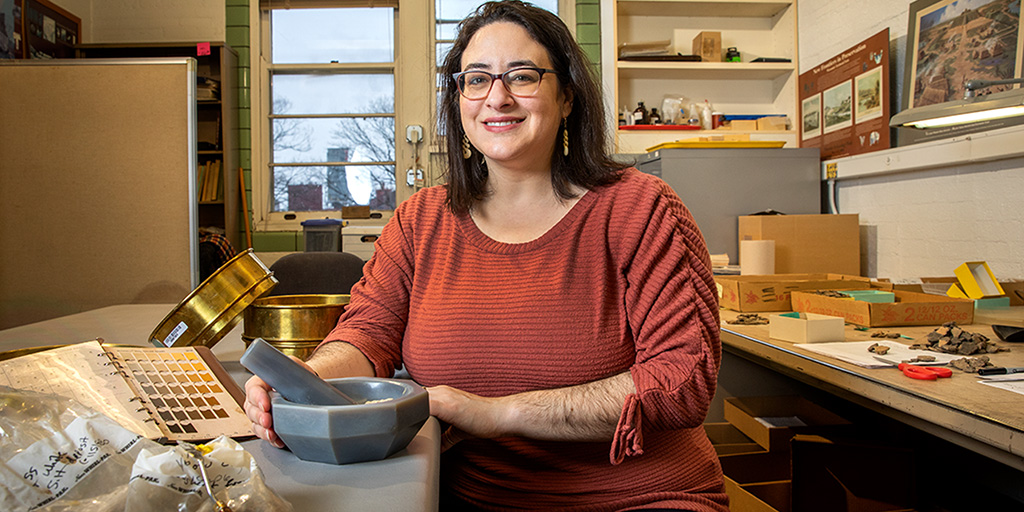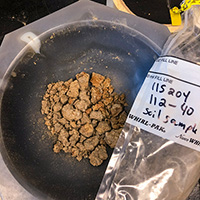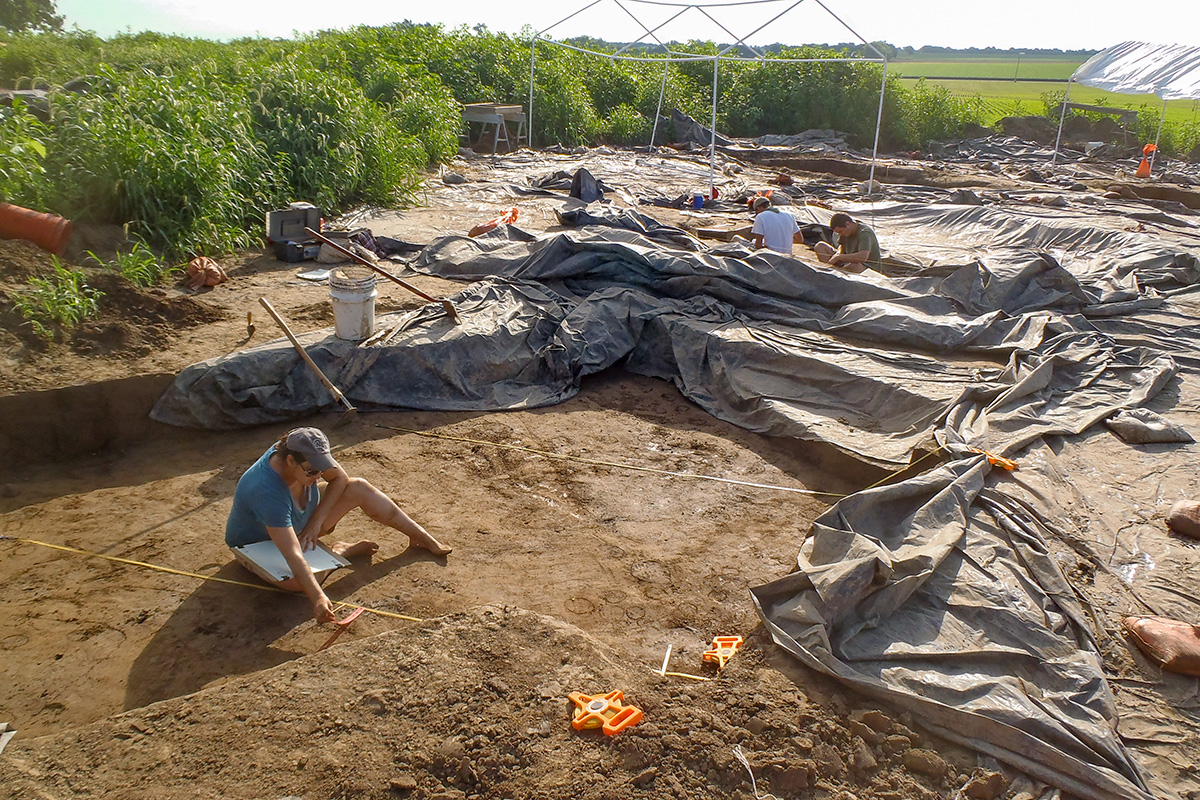
Illinois State Archaeological Survey postdoctoral researcher Rebecca Barzilai maps and collects soil samples from the floor of a religious shrine in Greater Cahokia, an ancient Native American settlement on the Mississippi River in and around present-day St. Louis.
Photo by Leslie Drane, the Emerald Acropolis Project
CHAMPAIGN, Ill. — "Huh."
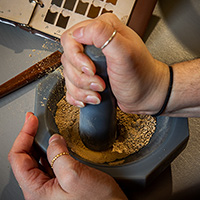
Grinding a sample from the floor of a religious shrine allows Barzilai to determine the source of sediments used to coat the floor and give it its characteristic bright yellow hue.
Photo by Fred Zwicky
Looking down at the material in the glass beaker, I'm perplexed. I'm trying to determine the ratio of silt to clay in my sample and something isn't right. The sediments in my beaker came from the floor of a religious shrine in Cahokia, an ancient Native American metropolis that grew up in and around present-day St. Louis, 900-1,000 years ago.
These yellow sediments were used to line the floors of a small religious shrine built on the Illinois side of the Mississippi River. The wooden posts and thatched roofs that made up the shrine are all gone now. So, now our best clues about what happened there lie in the soil.
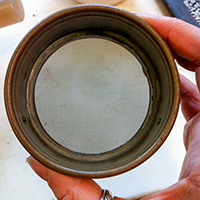
Barzilai uses a fine-mesh screen to separate silt particles in her samples.
Photo courtesy Rebecca Barzilai
Clay and silt are different sized sediments in soils that occur in different ratios in different places. I am interested in this ratio because I'm trying to determine where the Cahokians got what I assumed were bright yellow clays to line this floor. But when I sieve the sediments to determine the ratio of clay and silt particles, I see that there aren't enough clay-sized sediments here to even classify them as clays.
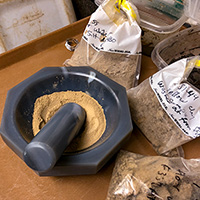
Ground samples from the floor of the shrine are a brighter yellow than the soil from nearby sites.
Photo courtesy Rebecca Barzilai
I take my samples to a colleague at the Illinois State Geological Survey who confirms my analysis. My "yellow clay lining" samples are not composed of clay at all. Instead, they are more than 90% light, grayish white silt. Similar to how some people today plaster floors, the Cahokians often used these bright yellow sediments to plaster the floors of their shrines. They mixed the light-colored silts with local soils, which have a darker yellow cast, making a slurry that is a much brighter yellow than the soils outside the shrine.
I'm thrilled to discover this because it ties into how Cahokians used water, and water-associated materials, to venerate certain places or buildings. They built the shrine walls by digging deep trenches or holes, so that most of the structures were surrounded by earth.
When a house structure was no longer being used, the Cahokians pulled out the walls and posts, leaving large holes in the ground. These old house basins were often used as pre-dug landfills, which they would fill with bones, shells and other waste.
The Cahokians would not throw trash in the basin of a former religious shrine in the same way they would a nonreligious building, however. Instead, what we find in several of these shrines are layer upon layer of fine silt deposits. By building up the layers of soil in this fashion, the Cahokians were "closing" or "purifying" the sacred space.
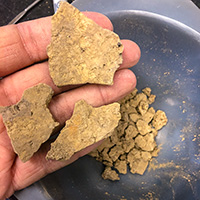
Compacted layers from the floor of a religious shrine at Cahokia are sometimes marked with the fingerprints of ancient people who built the shrines.
Photo courtesy Rebecca Barzilai
These mundane materials – and what we now know about them – form the threads of a story I can weave about the ancient Native American Cahokians, the places in which they lived and worshipped, and the events they experienced.
Picture this: A person sets out in the hazy morning from the urban center of downtown Cahokia to gather light-colored silts. They carefully transport the sediment to a shrine that is under construction. They mix together the light grey and yellow local soils with water to produce a bright yellow slurry. They smooth this mixture on the floor by hand, sometimes leaving a fingerprint or footprint behind. Over time, the floor is hardened by use.
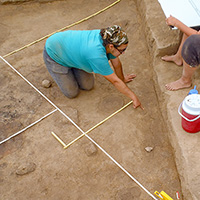
Researchers, including the author, left, mark and record their data collection sites.
Photo by Timothy Pauketat, the Emerald Acropolis Project
Years later, an archaeologist uses a trowel to scrape the surface of the soil to collect a sample and try to determine its origin. The floor material is so hardened by years of use that it pops off the surface like clay. The archaeologist grinds up the pieces and sieves them, only to discover their true identity.
Archaeologists are often asked, "What is the most interesting thing you've ever found?" I generally dread this question because it's not what you see in movies or on TV, those programs searching for the oldest artifact or another "Lost Civilization." My answer to this question is not as much about the objects I find as it is about the stories I learn from them.

